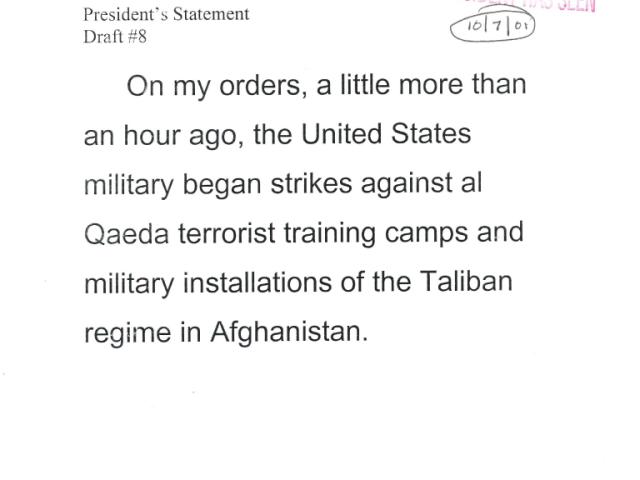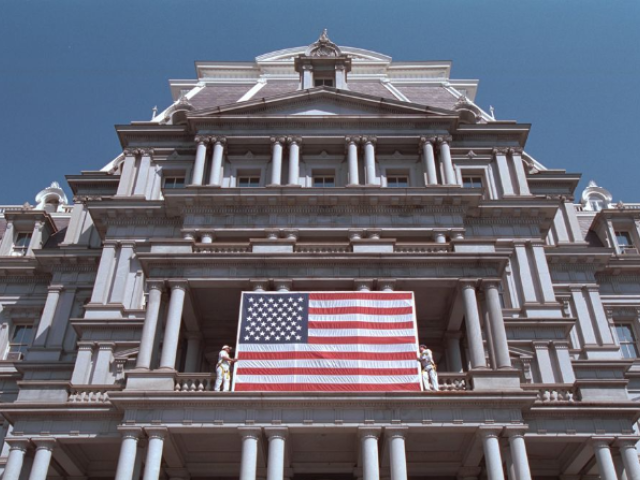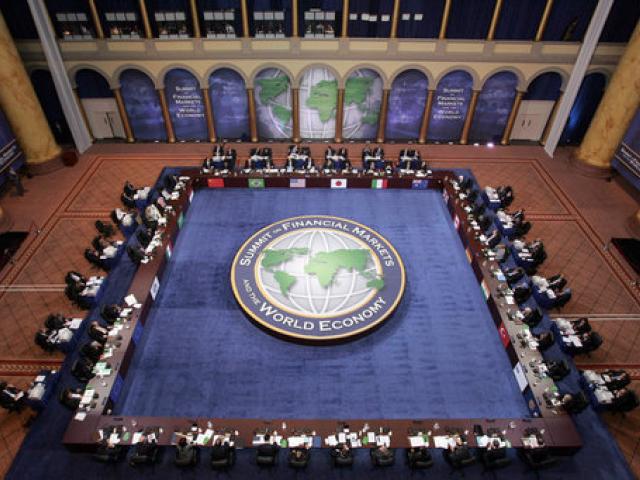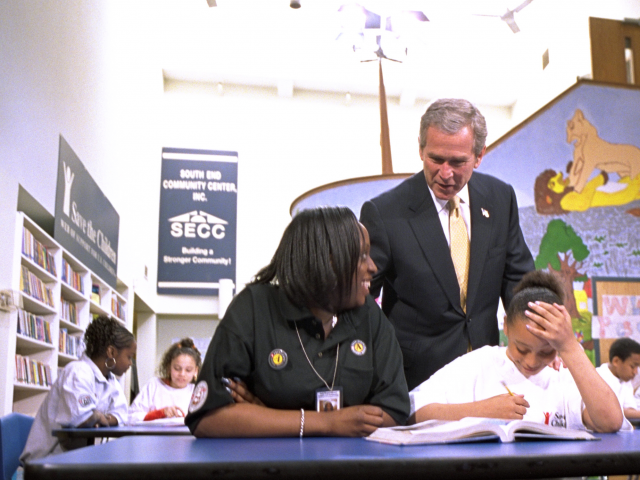Discover More Topic Guides

Health

Environment

The War In Afghanistan

Executive Office of the President

International Trade

For a guide of the archival records that are open for research, please download the Archival Research Guide:
The Iraq War was an armed conflict between a United States-led coalition force against the regime of Saddam Hussein from 2003 to 2011. The war was part of a broader campaign against terrorist activity known as the Global War on Terror.
States like these and their terrorist allies constitute an axis of evil, arming to threaten the peace of the world. By seeking weapons of mass destruction, these regimes pose a grave and growing danger…. We'll be deliberate; yet, time is not on our side. I will not wait on events while dangers gather. I will not stand by as peril draws closer and closer. The United States of America will not permit the world's most dangerous regimes to threaten us with the world's most destructive weapons.
-- President George W. Bush, State of the Union, January 29, 2002

By 2002, Iraq had long been in violation of the Gulf War Settlement, in which Iraq had agreed to weapons inspections by the United Nations and to abide by no-fly zones. Saddam Hussein defied this agreement by refusing access to military bases for weapons inspections and continually violating the no-fly zones in the region. The Central Intelligence Agency initially reported to United States government officials that Iraq was actively seeking to make and acquire weapons of mass destruction. This reporting was in error. Paired with Iraq’s reticence to allow weapons inspectors onto key sites, Iraq appeared to be a major threat to national security, and the United States considered Saddam Hussein to be a terrorist.
President George W. Bush first referred to Iraq, Iran, and North Korea as an “axis of evil” in the State of the Union on January 29, 2002. On November 8, 2002, the United Nations Security Council passed Resolution 1441, warning of “serious consequences” if Iraq did not offer unrestricted access to UN weapons inspectors.

On August 26, 2002, in a speech at the Veterans of Foreign Wars 103rd National Convention, Vice President Dick Cheney said, “Simply stated, there is no doubt that Saddam Hussein now has weapons of mass destruction. There is no doubt he is amassing them to use against our friends, against our allies, and against us. And there is no doubt that his aggressive regional ambitions will lead him into future confrontations with his neighbors -- confrontations that will involve both the weapons he has today, and the ones he will continue to develop with his oil wealth.”
Following a failed attempt to appeal to the United Nations for a mandate to invade Iraq, the United States, along with forces from Australia, Denmark, Netherlands, Poland, and Great Britain launched Operation Iraqi Freedom on March 19, 2003. On May 1, 2003, President George W. Bush declared the “end of major combat operations,” and the Coalition Provisional Authority (CPA) was established as the first of several successive transitional governments. Unfortunately, the armed conflict was far from over.
On December 13, 2003, Saddam Hussein was captured by United States special forces. Hussein was eventually sentenced to death for crimes against humanity in 2006 by an Iraqi court. His sentence was carried out near Baghdad on December 30, 2006.
Throughout the Iraq War, coalition forces faced problems with sectarian violence and insurgents. This reached a crisis point in 2006. This led the United States to increase the amount of troops deployed to Iraq by 20,000, known as the “surge,” in 2007.
It is clear that we need to change our strategy in Iraq…. So America will change our strategy to help the Iraqis carry out their campaign to put down sectarian violence and bring security to the people of Baghdad. This will require increasing American force levels. So I've committed more than 20,000 additional American troops to Iraq.
-- President George W. Bush, Address on Military Operations in Iraq, January 10, 2007
On December 18, 2011, the United States completely withdrew its military forces from Iraq, following a gradual withdrawal that began with an announcement by President Obama in February 2009. The war was incredibly costly. A little over 4,400 Americans and nearly 100,000 Iraqis were killed in the conflict that lasted over eight years. After the invasion, it was revealed that there were no stockpiles of weapons of mass destruction in Iraq, and that the United States government’s allegations thereof had been based on unreliable or misinterpreted intelligence.
The following carefully selected resources, some of which are from the George W. Bush Presidential Library, provide further information about the Iraq War.
3/19/2003
President Bush Addresses the Nation (re: Operation Iraqi Freedom)
5/1/2003
11/27/2003
President Bush Meets with Troops in Iraq on Thanksgiving
12/14/2003
President Bush Addresses Nation on the Capture of Saddam Hussein
6/28/2004
President Bush Discusses Early Transfer of Iraqi Sovereignty
06/13/2006
President Bush Makes Surprise Visit to Iraq, Meets with Prime Minister Maliki in Baghdad
11/5/2006
Bush giving his statement on the Saddam Hussein Verdict in Waco on November 5, 2006
12/13/2006
President Bush Meets with Senior U.S. Defense Officials on Iraq (to discuss possible surge)
9/3/2007
President Bush Meets with Prime Minister Maliki and Iraqi Leaders
12/13/2008
Additional press releases, Presidential Messages and Statements, and more from 2001 - 2009 are available through the Archived White House Website.
See also:
National Archives Library Information Center (ALIC) on the War in Iraq





